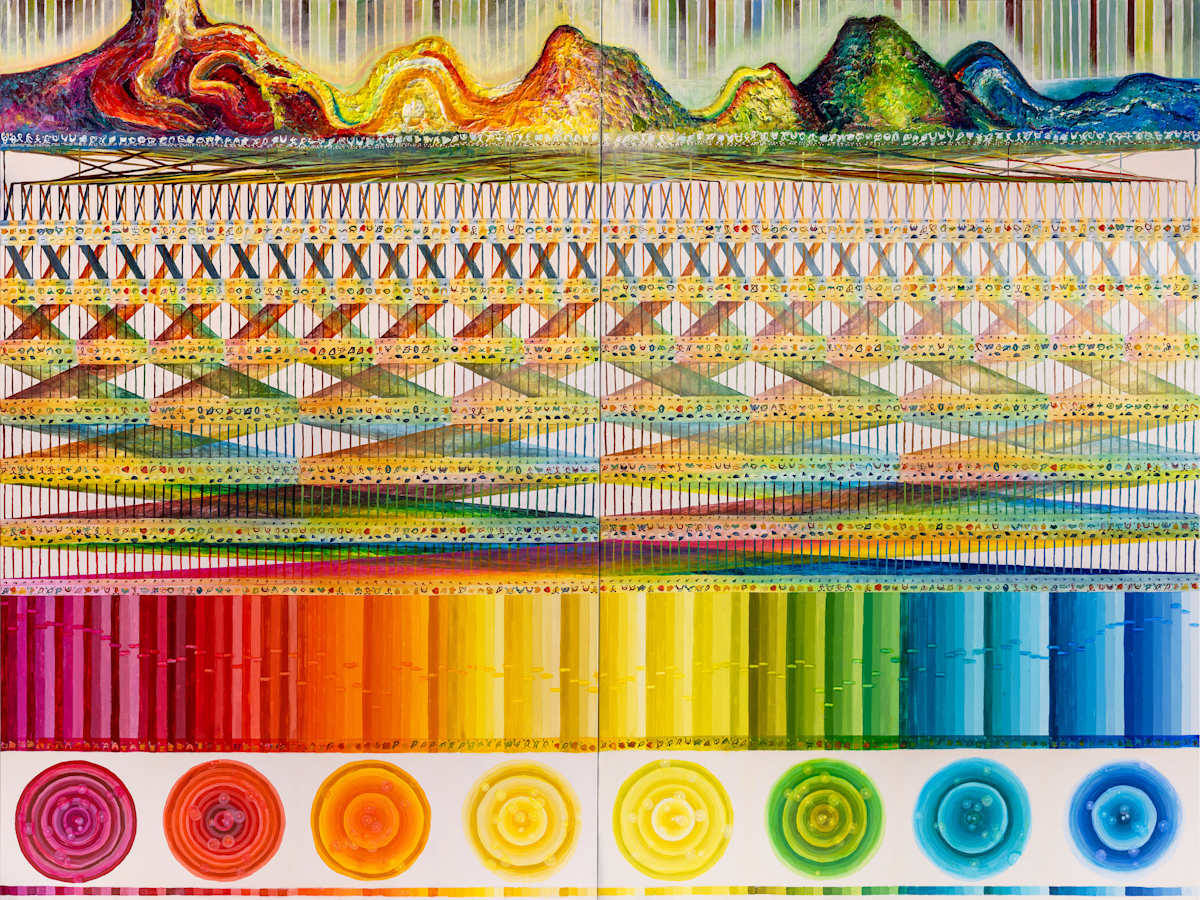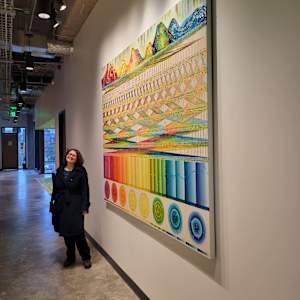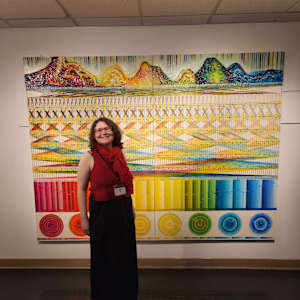The painting Frequency Transformation is a mathematical visualization of the Fast Fourier transform (FFT). Called “the most important numerical algorithm of our lifetime” by mathematician Gilbert Strang, the FFT is an essential algorithm in science, engineering, and mathematics, with many applications in art and communications.
The Fourier transform is a mathematical method to represent a signal, like a sound, picture, or electrical signal, as the sum of sinusoids of different frequencies. Each frequency sinusoid is scaled by some magnitude and shifted by some phase. The Fourier transform tells you the magnitude and phase of each frequency component.
The FFT is an algorithm for efficiently computing the Fourier transform of a discrete signal. A discrete signal is a sequence of data samples, like an audio recording sampled at 44.1 kHz.
In this painting, the top row depicts the input signal to an FFT. The form of a landscape and tree roots depicts elevation measurements collected in Bridle Trails State Park. The texture represents a physical quantity that is being measured, and the vertical lines represent the discrete samples. The symbols represent the numerical input data and binary indices.
FFT is a recursive divide-and-conquer algorithm. The input signal is split at each step into two parts based on even and odd indices. FFT is called recursively on the even and odd parts. The FFT(odd) results are multiplied by specific roots of unity and then added to the results of FFT(even). The crisscross patterns created by this data flow are called “butterfly diagrams.”
The middle section of the painting is the signal-flow graph of the FFT. The signal flows from the top row (input), through bit reverse index reordering (in binary), through each stage of the FFT butterfly network, and finally to the bottom two rows, where the signal is represented in the frequency domain with magnitude and phase.
The painting depicts a signal with 128 data points and log2 128 = 7 rows, a visualization of the FFT algorithm's O( N log N ) computational complexity.
The number system constructed for this painting is based on a visual vocabulary inspired by lush life and transformation. Base-20 (vigesimal) is a frequently used base for world number systems, e.g., Maya and Kaktovik numerals. According to scientist Neil Gershenfeld, 20 basic building blocks can be used to construct many complex systems, e.g., all proteins are made of 20 amino acids. The numerical glyphs are based on transformative symbols from the natural world, such as shapes found in butterfly wings, a nod to the “butterflies” that appear in the algorithmic structure of the FFT.
Another visual symbol in this painting is ripples on the water's surface. A Fourier transform can be described as a projection onto a set of sinusoids of all different frequencies, represented abstractly as reflections on the ripples in the water.
The title “Frequency Transformation” refers not only to the transformation of a signal into the frequency domain but also to the shift in mood and brainwave patterns that occur when people are immersed in nature. As a scientist, discovering how the natural world works brings me similar feelings of wonder and connection.
- Subject Matter: Mathematical
- Current Location: Seattle University Sinegal Center for Science and Innovation
- Collections: FFT Series



